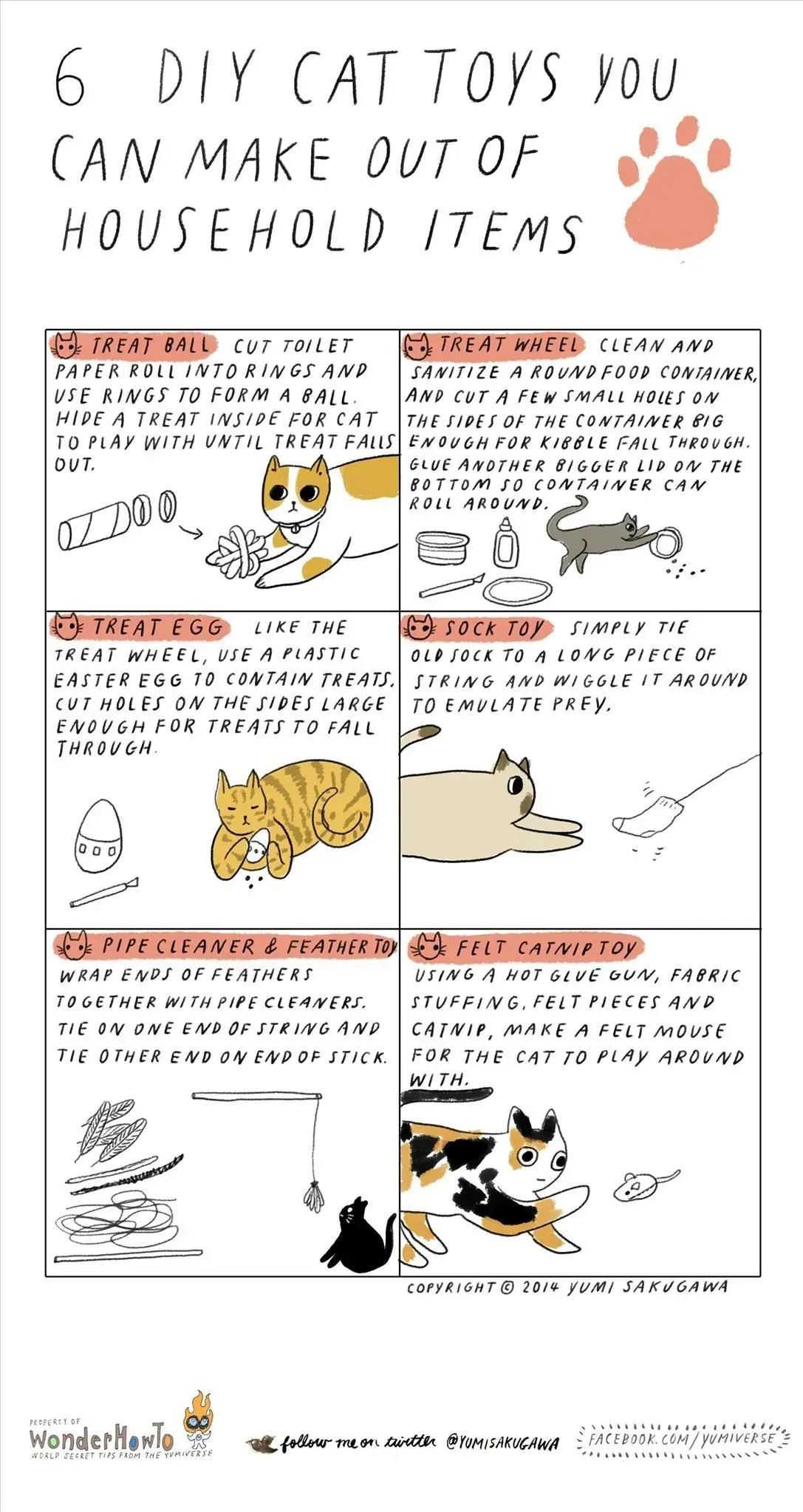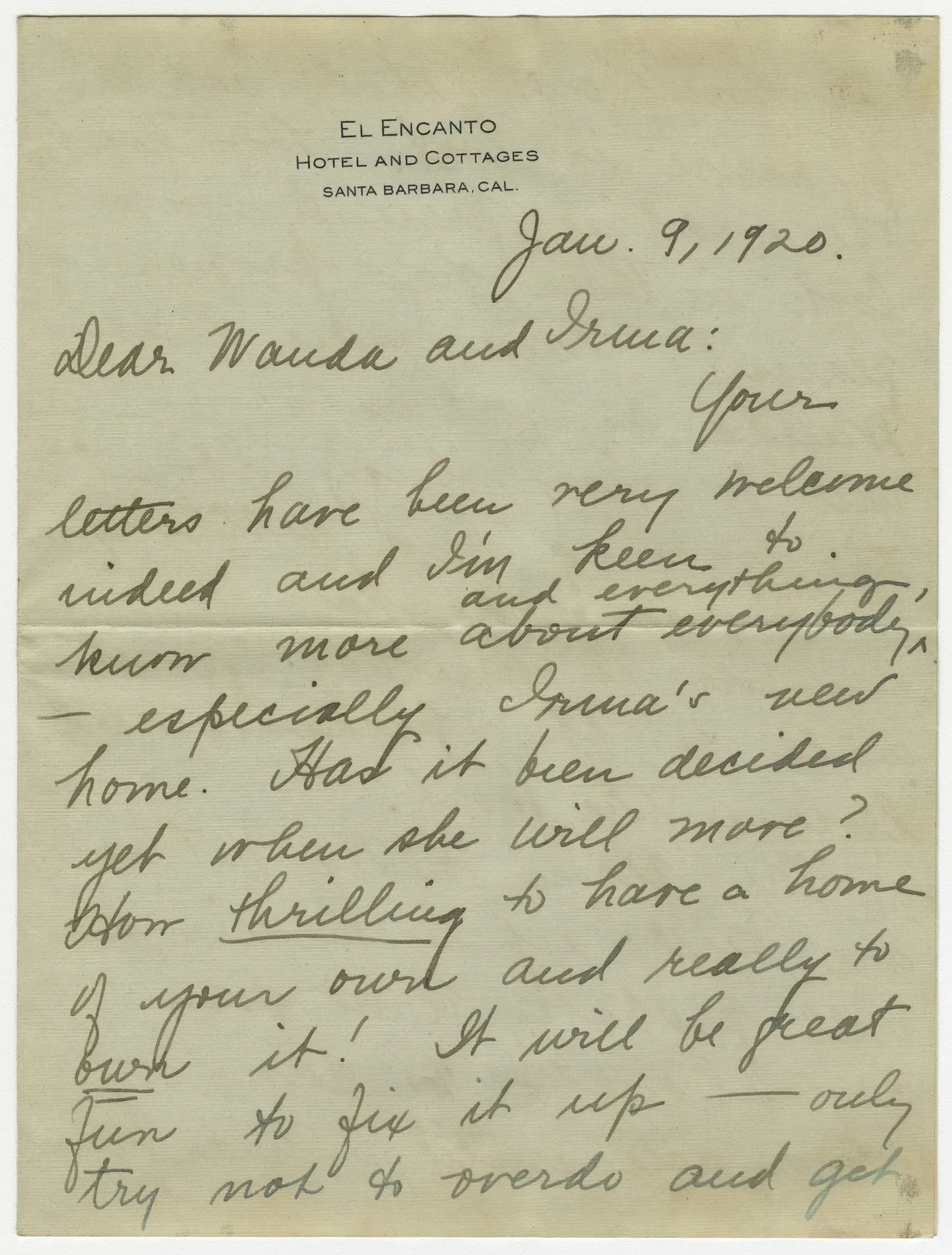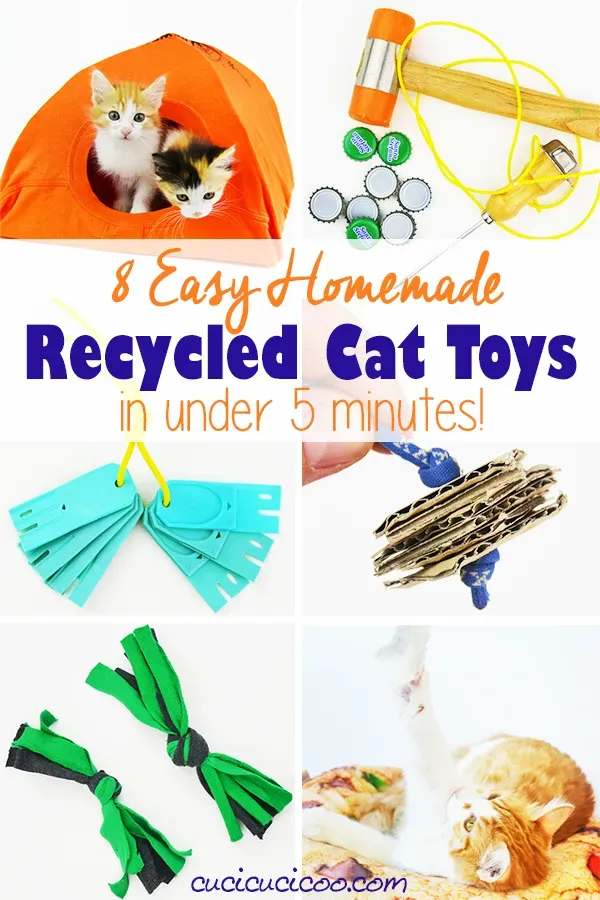Table of Contents
Let's be honest. You bring home that fancy, expensive cat toy with all the bells and whistles, convinced this is *the one*. Your cat sniffs it, maybe bats it once, then proceeds to play with the packaging. Sound familiar? Turns out, you don't need a bank loan to keep your feline overlord entertained.
Why Playtime Matters for Your Cat

Why Playtime Matters for Your Cat
Tapping into the Inner Predator
Your adorable furball might spend 16 hours a day napping on your clean laundry, but deep down, they're tiny hunters. That instinct to stalk, chase, and pounce is hardwired. Playtime isn't just cute; it's essential for letting them express these natural behaviors in a safe environment.
Think of it as their daily workout and hunting simulation rolled into one. Regular play keeps their muscles toned, their joints flexible, and helps prevent obesity, a common issue for indoor cats. A sedentary cat is often an unhealthy cat.
Busting Boredom and Bad Behavior
A cat with nothing to do is a cat looking for trouble. That scratching post suddenly seems less appealing than your new sofa corner. Those late-night sprints across your bed? Often a sign of pent-up energy from a day spent staring at the wall.
Engaging their minds with interactive play provides crucial mental stimulation. It challenges them, keeps them sharp, and redirects that energy away from destructive tendencies. Think of it as preventative maintenance for your furniture and your sanity.
- Maintains physical fitness and prevents obesity.
- Provides mental stimulation and prevents boredom.
- Reduces stress and anxiety.
- Satisfies natural hunting instincts.
- Strengthens the bond between you and your cat.
- Helps prevent destructive behaviors like scratching furniture.
Building Bonds and Boosting Confidence
Playing with your cat is quality time, pure and simple. Sharing those moments of chase and capture strengthens the connection you have. It's a language you both understand, built on trust and fun.
For shy or nervous cats, interactive play can be a powerful tool for building confidence. Successfully "catching" a toy or navigating a simple play structure gives them a sense of accomplishment. It can also help integrate new cats into a household or ease tensions between existing feline residents.
Simple Ways How to Make Cat Toys Out of Household Items: Cardboard Boxes & Paper Bags

Simple Ways How to Make Cat Toys Out of Household Items: Cardboard Boxes & Paper Bags
The Humble Box and the Crinkly Bag
Alright, let's talk about the undisputed champions of DIY cat entertainment: the cardboard box and the paper bag. You just ordered something online, and bam, instant cat fort. Forget buying those elaborate cat trees; a simple box provides a safe, enclosed space where your cat can hide, pounce, and feel secure. Cut some extra holes in different sizes to create windows or multiple entrances. Toss in a few crinkled paper balls or a treat, and you've got a multi-level play structure on zero budget. Paper bags (the kind without handles, seriously, cut those off) are fantastic for hiding and crinkling fun. Lay one on its side, and it's a tunnel. Bunch a few together, and it's a fascinating landscape for exploration. This is probably the easiest way how to make cat toys out of household items, requiring zero crafting skills.
Repurposing Household Items: Stuffed Animals & Balls for Cat Play

Repurposing Household Items: Stuffed Animals & Balls for Cat Play
Giving Old Plushies a New Life (Carefully)
We all have them: those dusty stuffed animals that haven't seen the light of day since... well, let's not dwell on it. Before you toss them, consider if they could become your cat's next obsession. Smaller, firmly stitched plushies without small plastic parts (like button eyes or noses that can be chewed off and swallowed) can be fantastic kicking and carrying toys. My cat, Mittens, once adopted a tiny, slightly-mangled teddy bear and would proudly carry it around the house, occasionally performing impressive wrestling moves on it. Just make sure there's no loose stuffing waiting to become a choking hazard. A quick inspection and maybe a stitch or two can turn forgotten fluff into feline fun.
The Simple Joy of Rolling Things
Cats are fascinated by movement, and few things move as unpredictably as a lightweight ball. Ping pong balls are perfect for this. They bounce erratically, roll fast across hard floors, and are light enough for a cat to carry in their mouth. Drop one down the stairs and watch the chase begin. Just be mindful of size – ensure they're not small enough to be swallowed. Crinkled-up paper balls work too and add an auditory element cats often love. These are classic examples of how to make cat toys out of household items that require zero modification.
When repurposing items, especially plush toys, safety is paramount:
- Check for small parts (buttons, beads, plastic eyes) that can be chewed off.
- Ensure seams are strong and not likely to burst, releasing stuffing.
- Avoid anything with long strings, ribbons, or loops that could cause entanglement.
- Wash old items to remove dust, dirt, and potential allergens or residues.
- Supervise initial playtime to ensure the toy is safe for your specific cat.
Beyond the Basic Ball: Adding Challenge
While a simple ball is great, you can up the ante slightly using other household items. Got an old shoebox? Cut some holes in the sides just big enough for a paw. Drop a ping pong ball inside. Your cat now has a puzzle toy where they have to bat the ball around inside the box to get it out. This encourages problem-solving and provides a different kind of mental engagement than just chasing. It’s another clever trick for how to make cat toys out of household items that adds variety to their play routine.
Creative Cat Toys: Toilet Paper Rolls and Old Favorites from Household Items

Creative Cat Toys: Toilet Paper Rolls and Old Favorites from Household Items
Crafting Treat Puzzles from Cardboard Tubes
Don't just toss those empty toilet paper or paper towel rolls. They are perfect for creating simple, engaging puzzle toys. It's a prime example of how to make cat toys out of household items that tap into their foraging instincts. Fold in the ends of the tube slightly, creating a little pocket. Drop a few dry treats or kibble inside. Then, fold the other end closed. Your cat now has to bat, roll, and chew at the tube to get the treats out. It's a low-tech, high-reward activity that provides mental stimulation and slows down eating for those who need it.
You can make it harder by punching small holes along the sides of the tube, forcing them to work the treats towards the openings. Or tape a couple of tubes together for a larger challenge. Just make sure the treats are small enough to eventually fall out, or your cat might just get frustrated and shred the tube (which, honestly, is also a form of play for some!).
Reviving Old Toys with Scent and Texture
Sometimes, the toys you already have just need a little refresh. That old catnip mouse that no longer excites? Don't banish it to the dust bunnies under the sofa yet. A simple trick for how to make cat toys out of household items feel new again involves scent. If you have catnip, rub the old toy generously with it. Store it in a sealed container with fresh catnip for a day or two to really infuse the scent. This can make a forgotten toy suddenly fascinating again. If your cat doesn't respond to catnip, try rubbing it with a bit of valerian root or silvervine, other natural attractants many cats love.
Another method is adding texture. Tie strips of old fabric (like from a worn-out t-shirt or towel) around a sturdy base toy. Just ensure the fabric is securely attached and doesn't fray into long, ingestible strings. The new texture and scent can pique their interest and turn something old into something excitingly new. It's about working with what you have and understanding what stimulates their senses.
- Toilet paper/paper towel rolls for treat puzzles.
- Old t-shirts/fabric scraps for adding texture.
- Catnip, valerian root, or silvervine to refresh scents.
- Cardboard boxes as hiding places or forts.
- Paper bags (handles removed!) for tunnels and crinkles.
- Ping pong balls for chasing and batting.
- Old stuffed animals (check for safety) for kicking and carrying.
- Shoeboxes with holes for ball puzzles.
Keeping Play Safe and Engaging with Household Cat Toys

Keeping Play Safe and Engaging with Household Cat Toys
Safety First: What to Watch Out For
Making cat toys out of household items is great for your wallet and the planet, but you absolutely have to prioritize safety. Cats are curious creatures, and anything small or stringy can quickly become a hazard. Think about what they might chew off or swallow. Buttons, beads, googly eyes on stuffed animals – these are choking risks or can cause serious internal blockages. Any toy you create should be sturdy enough to withstand biting and kicking without falling apart.
Long strings, yarn, ribbons, or elastic bands are particularly dangerous. Cats love to play with them, but if swallowed, they can cause intestinal linear foreign bodies, a life-threatening condition requiring emergency surgery. Always cut off handles from paper bags and remove any loose threads or embellishments from repurposed items. A quick tug test on any attached parts is a good habit.
Supervision and Toy Rotation
Even the safest-looking homemade toy needs supervision, especially when your cat is playing with it for the first time. Watch how they interact with it. Are they trying to eat it? Is it holding up to their enthusiasm? If a toy starts to show wear and tear – stuffing coming out, edges fraying – it's time to retire it before it becomes a problem. Don't leave potentially risky toys out when you're not around.
To keep things interesting, rotate the toys you offer. Just like kids, cats get bored with the same old things. Put some homemade creations away for a while and bring out others. When you reintroduce a toy after a break, it can feel new and exciting again. This also lets you inspect toys for damage before putting them back into the play rotation. Keeping playtime fresh is key to engaging your cat.
- Always remove small parts like buttons, beads, or plastic eyes from toys.
- Cut off all strings, ribbons, yarn, or elastic bands.
- Ensure repurposed items are clean and free of chemical residues.
- Test the sturdiness of the toy; if it falls apart easily, don't use it.
- Supervise initial play sessions with new or homemade toys.
- Inspect toys regularly for wear and tear and discard damaged ones.
- Rotate toys frequently to maintain your cat's interest.
Making Play Interactive and Fun
While solo play with household cat toys is good, interactive play with you is even better. Using a simple wand toy (even one you make yourself with a stick and some fabric scraps) allows you to mimic prey movements, triggering their natural hunting sequence: stalk, chase, pounce, kill bite. Let them "catch" the toy frequently to prevent frustration and build confidence. End the play session with a successful "capture" and perhaps a small treat, simulating the reward of a hunt.
Pay attention to your cat's body language. Are their eyes dilated? Ears forward? Tail twitching? These are signs they are engaged. If they seem bored or walk away, try a different type of toy or activity. Don't force play; it should be enjoyable for both of you. Understanding their cues makes playtime more effective and strengthens your bond, proving that making cat toys out of household items is just the start of a richer play life together.
The Simple Truth About Cat Toys
So there you have it. Before you click "add to cart" on another overpriced cat gadget, take a look around your house. That empty paper towel roll, that discarded cardboard box, the old t-shirt – they aren't just trash. They're potential goldmines of entertainment for your cat. Keeping your feline friend active and mentally stimulated doesn't require a fancy pet store haul. Often, the most effective, and certainly the cheapest, toys are the ones you figure out how to make cat toys out of household items. It might not look like much to you, but to your cat, it's a world of adventure waiting to happen. And hey, if they ignore it after five minutes, at least you didn't waste ten bucks on it.